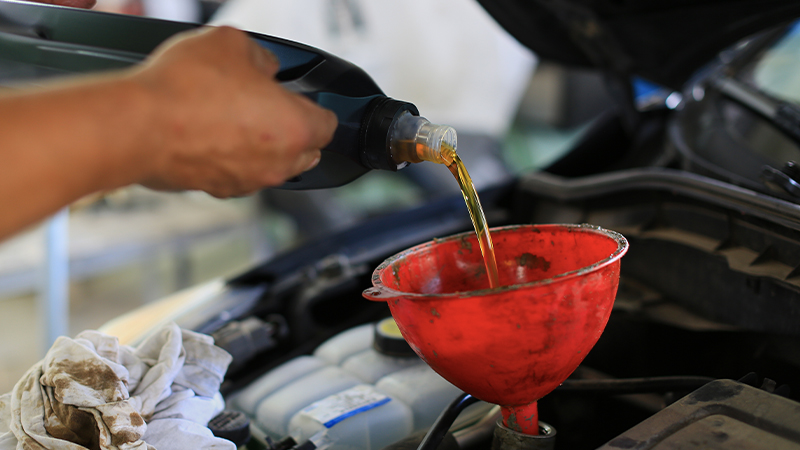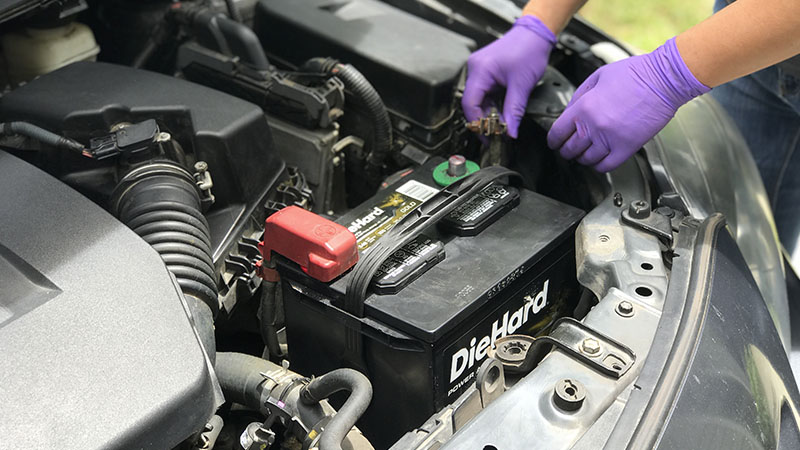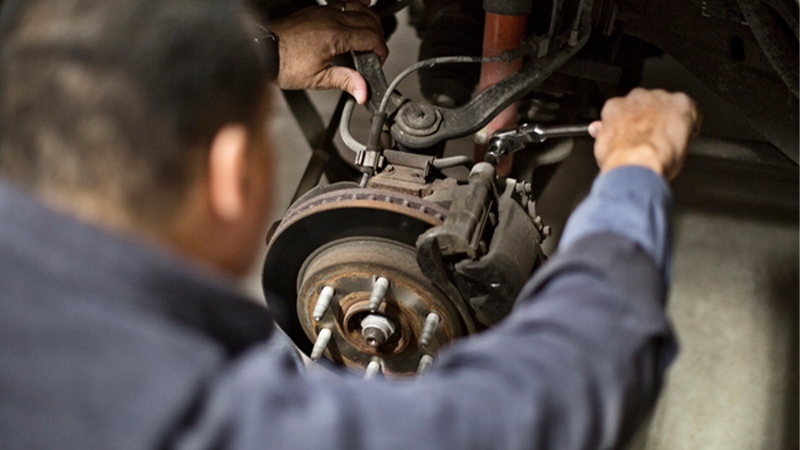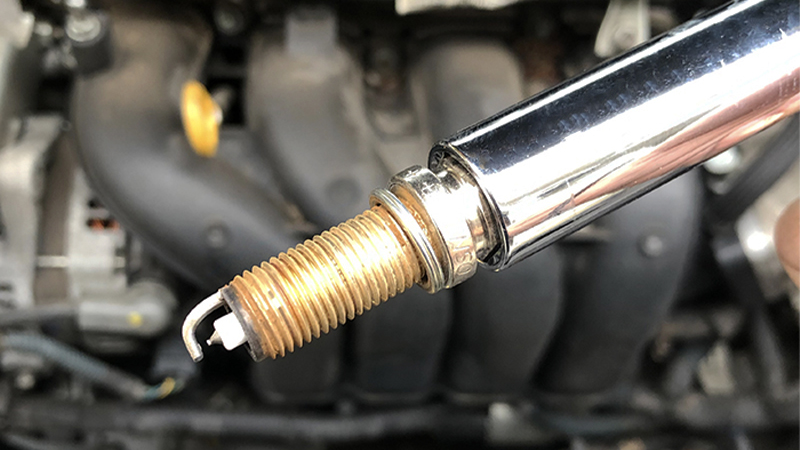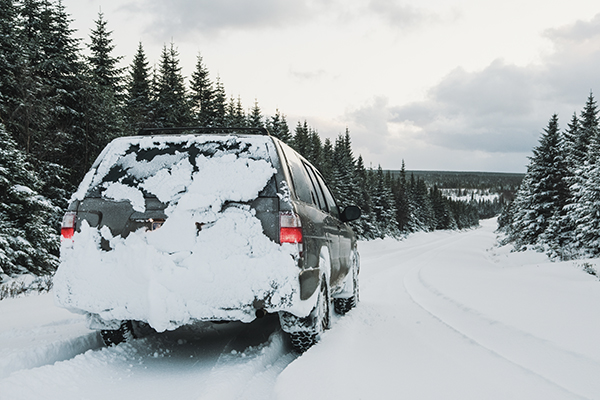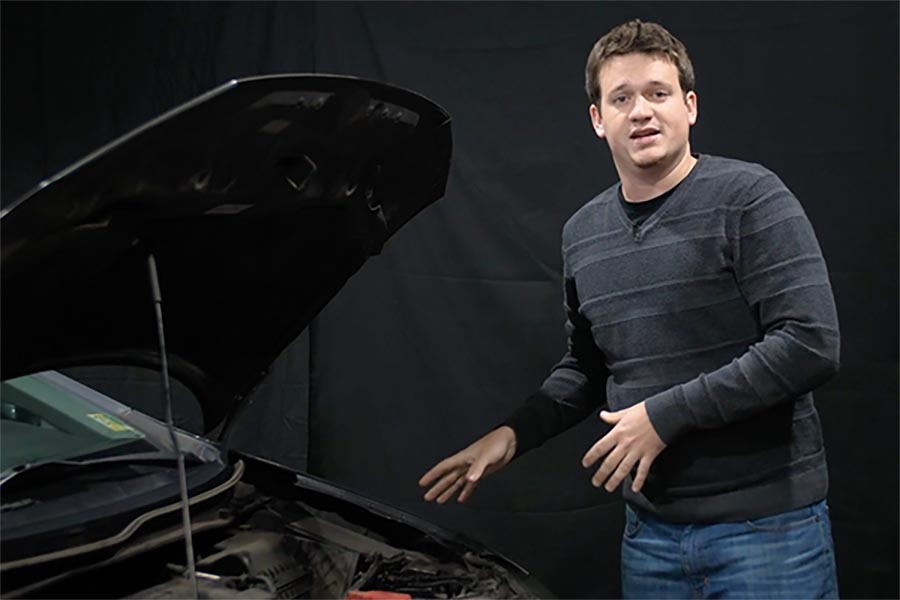Summer often means more driving as we get out of the house and have fun. Unfortunately, the heat can also really take a toll on your vehicle. Imagine you're on your way to your friend's BBQ with your famous mac n cheese when your engine overheats. Sure, you could keep your side dish piping hot on the hood while you wait for help to arrive, but you'd better be ready to fork some over to the tow truck driver. Or let's say your family is finally all packed and loaded up in the car, ready for that trip you've so desperately needed. The last thing you want is to find the car won't start because the battery has failed. Keep reading to learn seven important car maintenance tips you can do to totally conquer this summer.
In this article, we'll cover the following car tune up projects:
1. Change your engine oil and filter
Many experts will tell you that on-time oil changes are among the most, if not the most, important preventative auto care maintenance you can do. Without proper lubrication, the many internal components in your engine can be severely damaged, often beyond repair. Oil has other important purposes beyond lubrication, though. It also helps regulate the temperature inside the engine, and oil carries away small particulate matter that could otherwise cause internal damage. This is also why it's so important to change your oil filter at every oil change. A dirty filter won't be able to filter out those pollen particles, dust, and tiny flakes of metal the way it should.
This summer, give your engine the basic maintenance it needs by topping off the engine oil and changing it on time. We've got you covered with all the resources you need to handle this important job. When you're ready to get to work, be sure to use our oil bundle builder to get the best deals.
- Why does oil prolong the life of car parts?
- 3 good reasons to change your own oil
- How to change your engine oil and filter
2. Top off fluids
Topping off your fluids under the hood is a great way to monitor the health of many of your vehicle systems and to keep you and your passengers safe. Here's a detailed look at the fluids you should keep an eye on, and this summer we're giving a special nod to coolant. The coolant's job is to carry heat away from the engine and release it as it passes through the radiator. A low coolant level means that you're risking overheating the engine, which can lead to some serious – and seriously expensive – problems, such as a blown head gasket.
Leaving a drain plug loose can happen to the best of us. If you have a road trip coming up, be sure to perform all of your maintenance at least a week ahead of time. That way any problems can be fixed before you're hundreds of miles from home.
3. Replace wiper blades
Topping off your windshield wiper fluid isn't going to do much good when your cracked, torn wipers go bouncing loudly up and down the windshield. Before they get to that point, do some basic preventative maintenance and swap them out. To learn more about this easy DIY car repair or to view our top selling brands, visit our wiper blades guide.
4. Set tire pressures
Here's an auto care tip you might not have known: tires are made of slightly porous material, which means that even if you don't have a leak they still lose air over time. On average, a tire will drop around one PSI per month. Low tire pressures can affect your ride and fuel economy, so make this quick task a part of your summer auto tune up. And don't forget the spare!
If this is your first time setting tire pressures, here are a few tips to save you some time:
- The proper pressure for all of your tires should be indicated on a placard on the driver's door jamb.
- If that placard is missing or hard to read, a safe pressure for your main tires is 35 PSI.
- A temporary "donut" spare often requires more pressure, around 60 PSI. If you have a full-size spare, set it to the same pressure as your main tires.
5. Test and replace the battery
If you associate failing batteries with winter, you're not alone. Cold weather forces your battery to work harder, so underlying problems become more obvious. However, it's actually the hot summer months that do the real damage.
Flooded lead-acid batteries are filled with an electrolyte solution of sulphuric acid and water. In hot weather, that solution is more likely to evaporate, which causes a couple of problems. One problem is that the electrolyte is the conductor that allows electricity to flow between internal components, so if the level is low, the battery won't be performing at peak capacity. The other problem is that a low fluid level leaves the six internal metal battery cells exposed. This paves the way for oxidation and corrosion, which will lead to battery failure.
Summer is the ideal time to have your battery tested and replaced if necessary, which is a free car care service we offer with no appointment needed*. Or, for you go-getters, swapping out a battery is a great beginner-level DIY car repair that requires only a bit of knowledge and a few basic hand tools. If you suspect your battery might already be on its last legs, here are some helpful articles to guide you, from learning the signs of a bad battery to replacing it yourself.
6. Inspect and replace your brakes
When it comes down to it, there are three things you have to be able to do in order to safely drive: steer, stop and go. And that makes your brakes pretty important. Fortunately, most brake work is pretty straightforward, making it a good project to try at home. Gather your parts and supplies, and remember these important car brakes tips and tricks:
- Go slow and pay attention to details
- Work on one side of the vehicle at a time so the other side can be used for reference
- Double-check every bolt you removed to make sure it's tightened to spec when you're done
- Take a test drive in a low-traffic area
Right now is a great time to do a brake inspection, and we've gathered some of our best resources to get you started (and safely stopped):
- Signs that you need new brakes
- Benefits of better brake pads
- How to replace brake pads and rotors
- 7 tasks to completely maintain your brake system
7. Change your spark plugs
Spark plugs are easy to overlook. They aren't designed to squeal when they're worn out like your brakes, and you don't have a sticker in your windshield reminding you to replace them at a certain time or mileage. You do, however, have a manufacturer-recommended replacement interval that you can find in your owner's manual or online. Here are some common signs that it's time to replace your spark plugs:
- Rough idle
- Hesitation during acceleration
- Check engine light
- Rough starts
PRO TIP If you have spark plug wires, replace them at the same time as your spark plugs.
Continuing to drive with worn-out spark plugs can lead to other problems, too. When spark plugs don't fire correctly – or at all – misfires occur, which can lead to internal engine damage over time. Misfires also mean that fuel in the combustion chamber isn't completely burned, and it passes through the exhaust system. This can quickly ruin the delicate internal structure of the catalytic converter. These are both expensive problems that you can help prevent by replacing your spark plugs on time. Here's what you need to know to tackle this project:
Next Step: Advance Auto Parts
You've got all the know-how now. Nice! Your next step is to gather your supplies and start crossing items off your list. Advance makes it easy with plenty of convenient options:
- In-store shopping to chat with a knowledgeable Team Member, or
- Shop online with the option to pick up in store in 30 minutes
- Same day delivery in many areas
- Downloading our mobile app
- Enjoying special savings when you join our Speed Perks community
Whatever your summer plans — a fun trip or just getting to work on time — we know it's important. Share your plans or some additional summer tune-up tips in the comments below! We'd love to hear from you.
